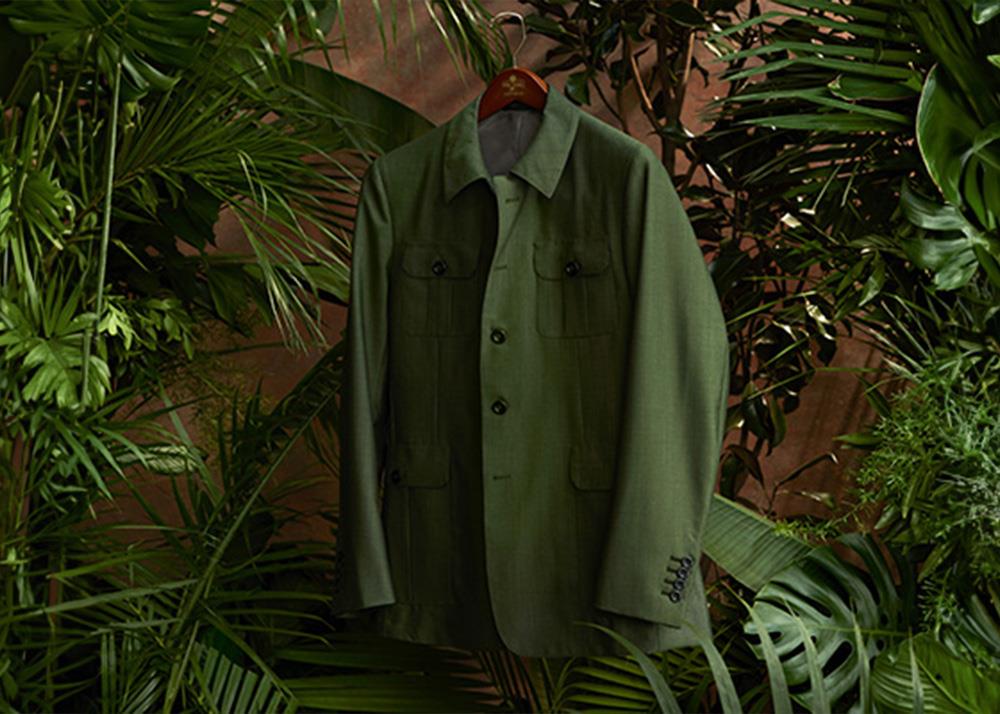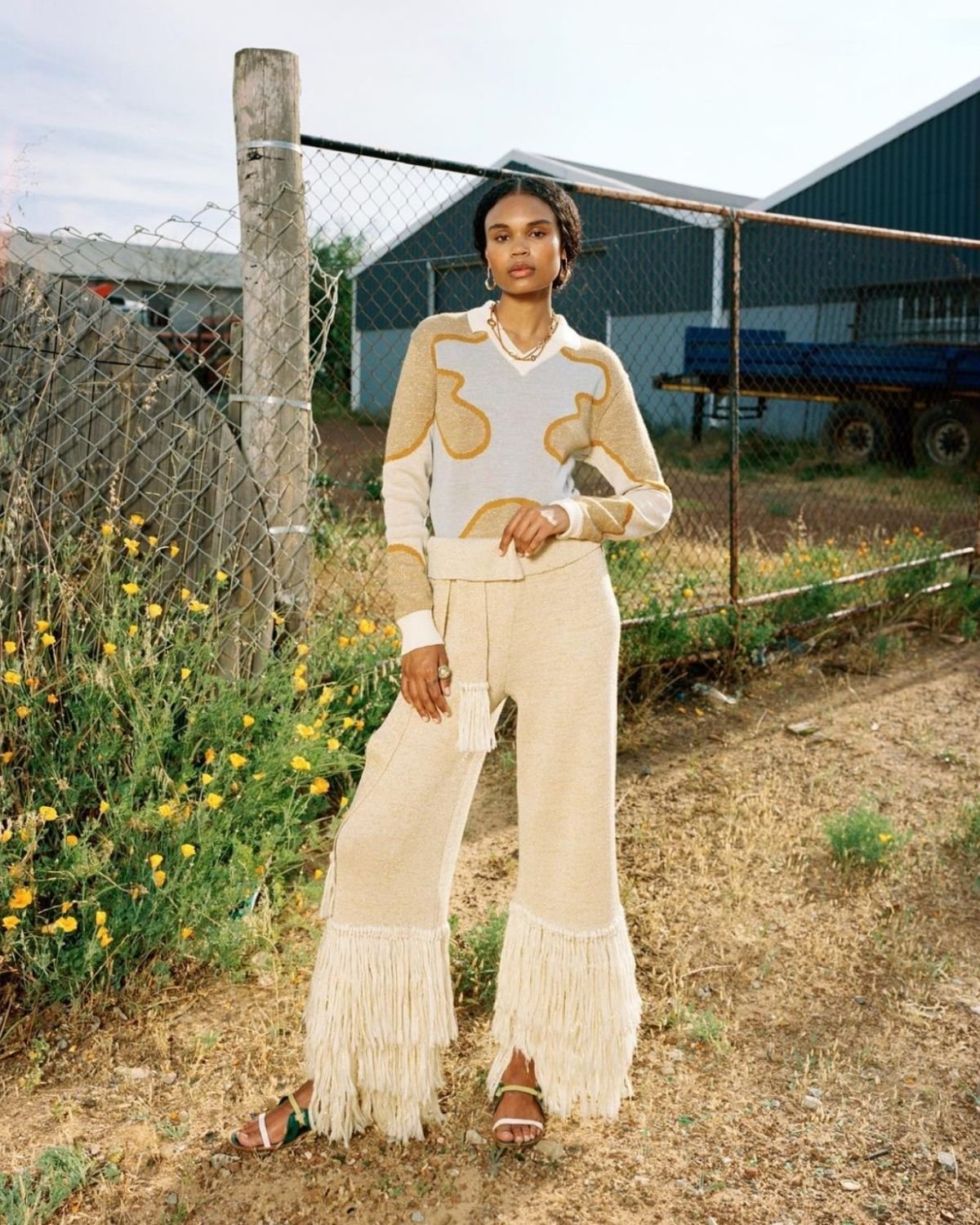Cape Town Sustainable Fashion Designers Leading the Environment-friendly Movement
Wiki Article
Stay Ahead of the Curve by Discovering Ingenious Style Fads
In a sector as vibrant as fashion, remaining in advance includes greater than just following current fads-- it requires an expedition of innovation. Smart textiles, as an example, are changing garments right into practical masterpieces, while 3D printing is reinventing style procedures with its personalized, waste-reducing capacities. As sustainability comes to be a keystone, advancements like environmentally friendly materials and round fashion practices are reshaping ecological responsibility - Cape Town Sustainable Fashion. In addition, the convergence of modern technology and fashion heralds a brand-new age of customer involvement. Exactly how, then, can these arising trends redefine the future of style, and what effects do they hold for brands seeking to flourish in this advancing landscape?
Accepting Smart Textiles
In recent times, the apparel industry has actually experienced a transformative change with the integration of wise fabrics, an advanced technology that mixes technology with material. This development stands for not only a blend of visual appeals and capability however additionally a significant leap in the direction of sustainability and personalization in fashion. Smart fabrics, also called e-textiles, installed sophisticated electronics such as sensors and conductive threads within the material, allowing garments to interact with the environment or the user.These fabrics are designed to monitor physical specifications, such as heart rate or body temperature, providing real-time health analytics. Past wellness applications, wise fabrics are also being made use of for flexible apparel, which can alter color or pattern in reaction to environmental stimuli, thus providing a dynamic fashion experience.
In addition, the growth of energy-harvesting textiles that produce power from motion or sunshine is leading the way for self-sufficient wearable innovation. This innovation is attracting ecologically aware customers and developers aiming to minimize the environmental footprint of fashion. As r & d in this area breakthrough, wise textiles are anticipated to end up being significantly widespread, reshaping the landscape of modern-day fashion with their multifunctional abilities.
The Surge of 3D Printing
Transforming the production landscape, 3D printing has become a game-changer in the apparel industry. This innovative innovation has actually enabled designers to push the borders of creative thinking, producing complex and tailored garments that were formerly unthinkable. By leveraging digital design and additive manufacturing, 3D printing promotes the creation of complex geometries and patterns, permitting designers to try out new appearances and structures.A remarkable benefit of 3D printing in vogue is its capability to produce on-demand, reducing waste and minimizing inventory requirements. This efficiency not just enhances production procedures but also enables rapid prototyping, enabling designers to bring their visions to life in a shorter timeframe. Additionally, 3D printing sustains modification somewhat unparalleled by typical approaches, providing personalized fits and distinct layouts customized to individual customer preferences.
The surge of 3D printing has likewise equalized style, making it obtainable to arising designers who can currently produce top notch items without considerable monetary investment in traditional manufacturing facilities. As technology remains to advance, the style sector is poised to harness the full possibility of 3D printing, discovering new materials and methods that will most certainly redefine how style is developed and generated.
Lasting Fashion Developments
As the fashion business faces journalism need for environmental responsibility, lasting fashion developments have emerged at the leading edge of transformative modification. The expanding understanding of ecological impact has actually fueled a change towards more eco-conscious techniques and materials. Brand names and developers are now focusing on sustainability, incorporating techniques that minimize waste and minimize carbon impacts.One considerable development is the surge of round style, which stresses recycling and upcycling to expand the lifecycle of garments. This technique not only reduces waste but additionally encourages discover this customers to embrace a much more mindful technique to clothes consumption. Furthermore, the usage of lasting products, such as natural cotton, hemp, and recycled polyester, has gotten traction. These materials require much less water and power throughout manufacturing, dramatically lessening environmental effect.
One more breakthrough lies in the fostering of cutting-edge dyeing strategies that make use of all-natural dyes or waterless processes, thus decreasing the substantial amounts of water and chemicals generally made use of in textile dyeing. In addition, innovations in biotechnology have caused the development of lab-grown leather and textiles, providing cruelty-free and ecologically friendly alternatives to standard products. With these pioneering efforts, the garment industry is making purposeful strides his response in the direction of an extra lasting future.

Tech-Integrated Apparel
Tech-integrated apparel represents an innovative fusion of fashion and technology, improving how individuals communicate with their clothes. This innovative domain is noted by the addition of smart textiles and embedded digital components, boosting both capability and visual appeal. From health and fitness trackers installed in sportswear to heated coats regulated via smart device applications, tech-integrated apparel uses customers extraordinary comfort and versatility.Introducing brand names are driving this trend, concentrating on developing garments that respond to environmental stimuli or user commands. As an example, some garments can change shade or pattern in response to temperature level changes, while others include biometric sensing units to keep track of health and wellness metrics like heart rate or stress and anxiety degrees. The seamless combination of innovation right into fabrics also expands to ecological sustainability, with initiatives to establish self-cleaning fabrics or garments that get used to climate condition, therefore lessening the requirement for multiple layers.
Moreover, the advent of wearable innovation is not simply limited to apparel yet encompasses devices like watches and eyewear, further widening the scope of tech-integrated style. As the industry remains to innovate, the potential for customization and personalization in apparel expands, using consumers distinct, tech-enhanced style experiences that satisfy their private demands and choices.
Future of Virtual Fashion
Recently, the future of virtual fashion has actually emerged as a transformative pressure within the sector, leveraging advancements in electronic innovation to redefine how style is created, experienced, and taken in. By integrating enhanced fact (AR), digital fact (VIRTUAL REALITY), and 3D design devices, developers can currently craft interactive and immersive experiences that go beyond traditional fashion boundaries. Online style enables the creation of garments that exist solely in electronic settings, offering limitless opportunities for advancement without the constraints of physical manufacturing.This electronic shift not only offers chances for imaginative expression but additionally addresses sustainability worries integral in standard style practices. Cape Town Sustainable Fashion. By removing the need for physical resources, online style decreases waste and decreases carbon impacts. In addition, the increase of online fashion straightens with the increasing customer need for customized and unique experiences, as virtual garments can be personalized and tailored to specific choices with ease

Conclusion
The style sector's future lies in the combination of lasting practices and innovative innovations. Virtual style is poised to redefine customer interactions.In current years, the fashion sector has actually observed a transformative change with the assimilation of wise textiles, an hop over to here innovative innovation that mixes innovation with material.As the fashion industry grapples with the pushing requirement for ecological duty, sustainable style advancements have arised at the center of transformative modification.In recent years, the future of virtual style has arised as a transformative force within the sector, leveraging innovations in digital innovation to redefine just how style is developed, experienced, and eaten. The surge of virtual style lines up with the boosting customer demand for special and personalized experiences, as digital garments can be personalized and tailored to specific choices with simplicity.
The style sector's future lies in the combination of ingenious modern technologies and sustainable practices.
Report this wiki page